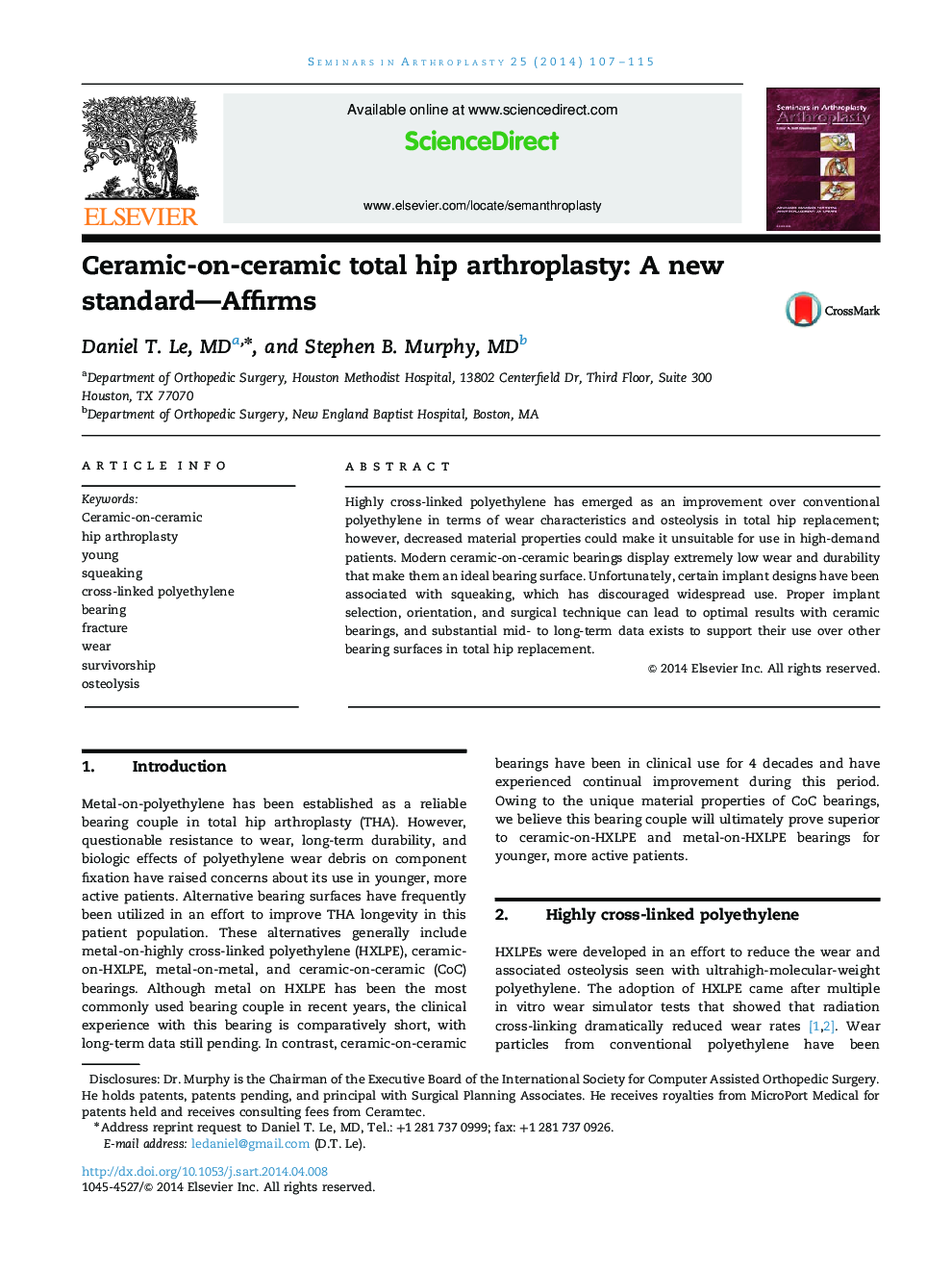| Article ID | Journal | Published Year | Pages | File Type |
|---|---|---|---|---|
| 4093788 | Seminars in Arthroplasty | 2014 | 9 Pages |
Abstract
Highly cross-linked polyethylene has emerged as an improvement over conventional polyethylene in terms of wear characteristics and osteolysis in total hip replacement; however, decreased material properties could make it unsuitable for use in high-demand patients. Modern ceramic-on-ceramic bearings display extremely low wear and durability that make them an ideal bearing surface. Unfortunately, certain implant designs have been associated with squeaking, which has discouraged widespread use. Proper implant selection, orientation, and surgical technique can lead to optimal results with ceramic bearings, and substantial mid- to long-term data exists to support their use over other bearing surfaces in total hip replacement.
Keywords
Related Topics
Health Sciences
Medicine and Dentistry
Orthopedics, Sports Medicine and Rehabilitation
Authors
Daniel T. Le, Stephen B. Murphy,
